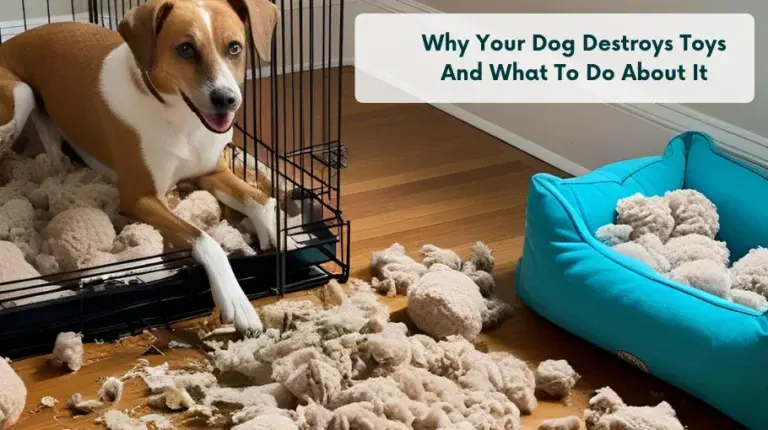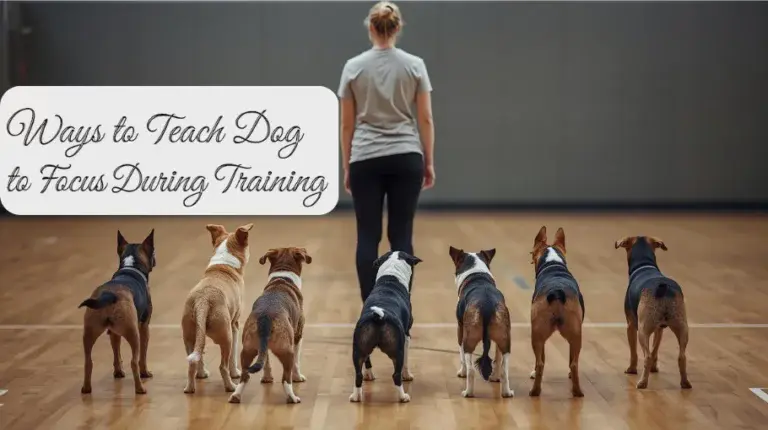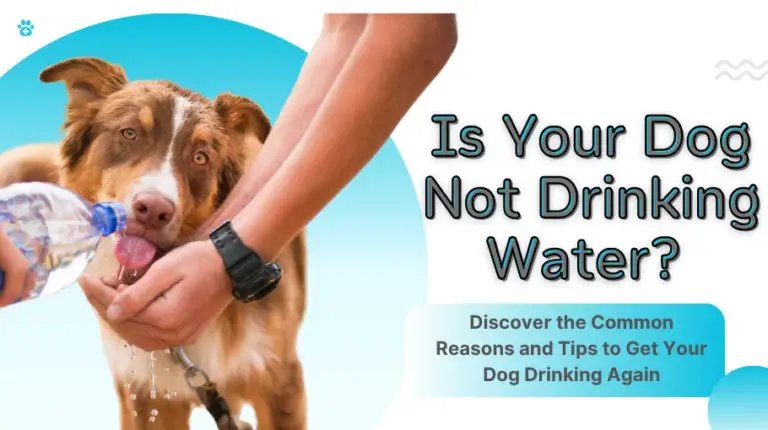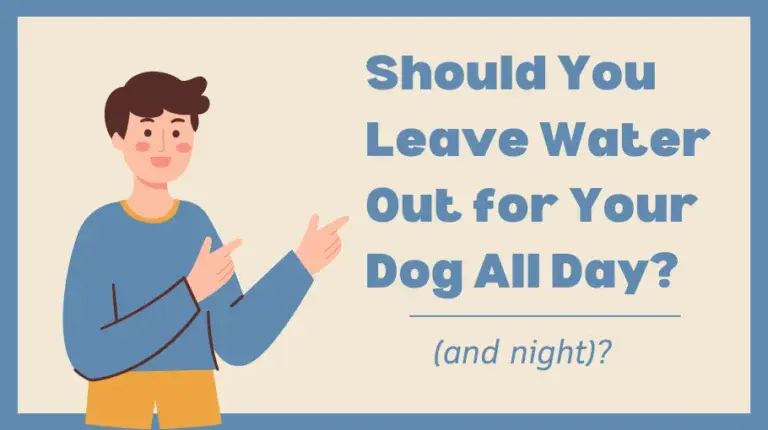Why Your Dog Avoids Their Crate Water Bowl (And How to Fix It)
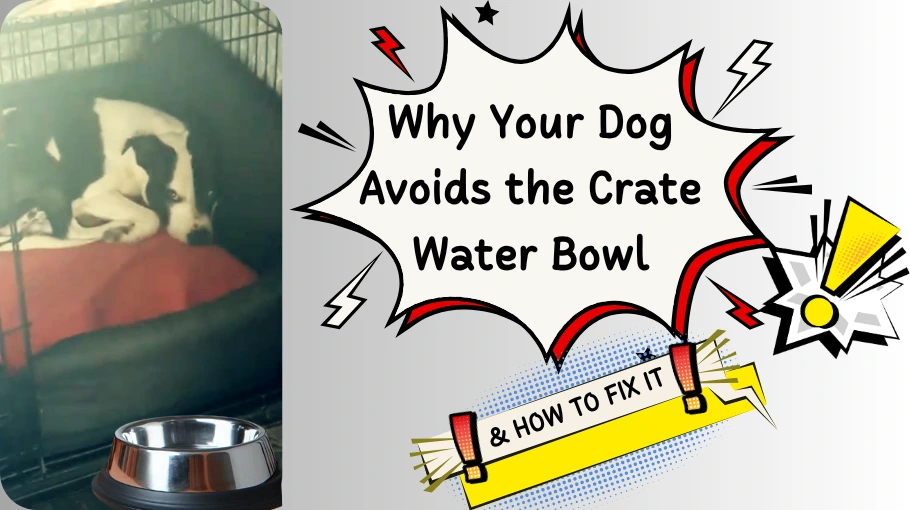
No matter what bowl’s in the dog crate, some dogs can be downright dramatic. Some paw at the water like it’s a puzzle to solve, others splash around or even avoid the bowl entirely. It might sound like just a quirky habit, but these dog bowl behaviours can actually reveal what your dog really thinks about their crate water bowl.
It’s Not Just a Quirk — It’s a Problem You Can Solve…
You’ve got the crate set up, bedding sorted, and a nice fresh bowl of water inside — but your dog won’t go near it. Or worse, they knock it over, paw at it, or act like you’ve trapped a ghost in there.
It’s frustrating. And if you’ve noticed they’re not drinking as much as they should, it’s worrying too.
The good news? This isn’t some weird, unfixable behaviour. There are legit reasons your dog avoids their crate water bowl — and once you know what’s going on, it’s easier to make changes that help them feel more at ease.
Why Some Dogs Avoid Crate Water Bowls
Some dogs don’t mind a water bowl in the crate. Others treat it like it’s radioactive. If your pup seems weirdly avoidant, there’s usually a reason — even if it’s not obvious at first glance.
1. Bowl Placement Isn’t Working for Them
Dogs like a bit of predictability. If the bowl’s crammed in a corner, wedged next to toys, or placed right where they stretch out, they might avoid it entirely. Even a bowl that shifts around with movement can throw them off.
Try placing the bowl in a spot where your dog can reach it easily without stepping in it or bumping it with their paws. If they avoid the whole crate, see what to put in a dog crate to make it feel more comfortable overall.
2. The Sound or Feel of the Bowl Is Off
Some dogs are sensitive to sound — especially the clink of metal on crate bars or the slosh of water inside a loose bowl. Others don’t like how a cold stainless steel bowl feels, or get spooked when it moves around.
Clip-on bowls or rubber-bottomed no-spill designs often help here. They stay put and don’t make that jarring metal-on-metal sound every time your dog shifts.
3. They’ve Learned the Bowl Tips Over (And That’s Not Fun)
If your dog has ever knocked over their water bowl and ended up lying in a puddle, that memory might stick. Crates don’t dry out quickly, and soggy bedding isn’t exactly inviting. Dogs tend to avoid repeating uncomfortable situations — even if it means going without water.
4. Fear of the Crate Itself
If your dog is already uneasy about the crate, anything inside it (including the water bowl) might be part of the problem in their mind. This is more common with rescues or dogs who were previously crated as punishment.
Positive crate association — like treats, toys, and slow introductions — can help ease crate anxiety over time.
5. They’re Just Weird About Water Bowls
Some dogs have oddly specific water bowl quirks. They’ll drink just fine from a puddle outside or your glass on the table… but not the one you lovingly placed in their crate.
Sometimes it’s down to smell (dish soap residue, another pet’s scent), other times it’s whisker fatigue from a narrow bowl, or something blindingly obvious once you spot it – algae in the dogs water bowl. I was surprised how quickly that showed up!
Do Dogs Need Water in Their Crates?
This one gets debated a lot — and like most things in dog care, the answer is: it depends.
If your dog is only crated for short bursts (say, an hour or two), they probably don’t need water in there. In fact, for some dogs, leaving water in the crate can cause more issues — like spills, soaked bedding, or even overdrinking from stress.
But if your dog is crated for longer stretches — think workdays or overnight — they do need access to water. Dehydration can creep up quickly, especially in warmer weather, or for dogs who get anxious and pant more while confined.
The key is choosing the right kind of bowl: one that won’t tip, slide, or splash everywhere the minute your dog shifts position.
Tip: Dogs that get stressed in crates may actually drink more, not less. If your dog licks obsessively or always goes straight to the water bowl after being let out, consider upgrading to a no-spill option that stays put.
Common Water Bowl Mistakes in Crates
If your dog’s avoiding the crate bowl (or you’re just getting set up), here are a few common slip-ups that can make things harder than they need to be:
Using the Wrong Type of Bowl
Light plastic bowls can slide, tip, or even get chewed. That’s a triple no from most dogs. And if the crate moves during car travel? Game over.
Look for stainless steel or heavy ceramic with an anti-slip base. Even better, go for a clip-on bowl designed for crates. Bonus: they sit higher, which some dogs find more comfortable.
Bowl Too Big, Too Small… or Just in the Way
If your dog’s trying to stretch out and keeps bumping the bowl, it becomes something to avoid. A giant bowl can also tempt them to turn it into a splash zone.
Pick a bowl that matches your dog’s size and the crate’s layout. And always check they can reach it easily without stepping in it.
Letting Spills Soak In
Once a dog has laid in wet bedding, they remember. If you’ve got a serial spiller, and the crate smells a bit off, even clean water might seem like an enemy.
Use waterproof crate mats or absorbent pads underneath. You want to avoid creating any negative associations with being near their water.
Not Cleaning the Bowl Often Enough
Even if your dog doesn’t avoid the bowl, dirty water can lead to all sorts of issues — from bacterial growth to plain bad smells. And yep, dogs can smell way more than we can.
I liked the cleaning hack from Aggie (How Clean is Your House show) – A light coating of vegetable around the base and sides of the bowl stops gunk from sticking. Handy for those who don’t clean the dogs water bowl everyday. I don’t. No harm.
The Best Kinds of Water Bowls for Crates
You don’t need anything fancy, but a regular kitchen bowl usually isn’t going to cut it inside a crate. Here’s what tends to work better:
Clip-On Bowls
These attach to the crate bars so they stay in place — no tipping, no sliding, no puddles. They can be ideal for travel or longer crate stays, and they keep the water at head height for easy sipping. Look for stainless steel or BPA-free plastic, depending on your dog’s chewing habits.
No-Spill Bowls
If your dog’s a bit clumsy or still figuring out crate life, a no-spill bowl with a weighted base or splash guard is a smart move. They’re often shaped so the water sits lower in the centre, making it harder to splash out.
One bowl you might be interested in is the Road Refresher — quite possibly the best no-spill dog water bowl for crates I’ve come across.
How to Set Up Your Dog’s Crate Water Bowl for Success
Getting your dog comfortable with their crate water bowl isn’t just about the bowl itself — it’s about how you introduce it and keep it fresh.
- Choose the right spot: Make sure the bowl is secure but doesn’t get in the way of your dog lying down comfortably. Paw bumps and spills often happen when there’s not enough room.
- Introduce it gradually: If your dog’s new to having water in their crate, try offering water just outside the crate at first, then, when you’re there and the crate is open for them to wander in and out freely, put the water bowl in the crate.
- Keep it clean: Fresh water every day is a must. Even better if you can wash the bowl regularly to avoid the build-up of slime or smells that can turn your dog off.
- Watch for signs: If your dog avoids the bowl, check for issues like whisker fatigue (bowls with high sides can irritate sensitive whiskers) or bowl material — stainless steel often beats plastic for taste and durability.
- Try a water bottle: For some dogs, especially those that chew or splash, a water bottle clipped inside the crate can be a neat alternative.
Final Thoughts
Let your dog train you for a bit. Watch how they interact with their water bowl—both inside and outside the crate. Are they pawing at it, pushing it into a corner, gnawing on it, or avoiding it altogether? It’s pretty rare for a dog to dislike water itself, so when they do, it’s usually a quirky behaviour or something about the setup they don’t like.
The best gift you can give your dog is time to understand their little signals, then adjust accordingly. Sometimes it’s as simple as moving the bowl to a better spot, switching to a different shape, or choosing a more hygienic material. Get those nailed, and your dog can enjoy fresh water whenever they want, without any fuss.

